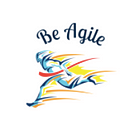Build products that users love!
The sole purpose of any product is to solve a real-time problem and provide value to the users. Take the example of any product — Uber and Ola make cab hiring easy for us, and Amazon and Flipkart make shopping easy.
Apart from solving a real-time problem, these products provide a better user experience. User experience is one of the foremost reasons people prefer one product over others. With hardly three clicks, I can book a cab on Uber, and with two clicks, I can order my favourite book from Amazon.
You must have your choice of product over another, Uber over Ola or vice-versa. Think, what is the reason? It’s User Experience.
We can build products that users love to use by first understanding — who is our end users. And what is their need? Get feedback from your users before/after adding any feature to your product to enhance the user experience.
How can we take feedback from users before we build it?
Identify a group of users who can be your potential users and invite them to an event (a personal invitation will make them feel privileged), showcase the prototype you are building or showcase the flow or user journey through mockups. This will help you get feedback before investing in your product/feature.
In my organization (Agile Cockpit), we have identified a group of users that we call Super Users, and we present them the user journey through mockups or sometimes through wireframes. This has helped us in reducing the feedback received after building a product.
Organize User Safari —
This is my personal favourite; fun and a great way to collect feedback and understand users.
Organize a user safari and invite your users to this event; involve your developers in this safari. Don’t tell them how to use the product/feature; let them explore themselves.
Join different groups and ask them how they find a particular feature. How does the product/feature help them in their day-to-day work? How can we improve the product? What we can introduce new features to help them better.
Organizing these User safaris is simple. It can be an excellent opportunity for your developers to understand the actual users and their pain in building the product.
Get feedback through surveys —
Surveys are a great way to take feedback but keep the surveys short. You can include rating questions like — How will you rate this feature from a usability perspective? How likely will you recommend us to your friends/family? Include open-ended questions like — How can the product be improved to serve you better?
Invite users to Sprint Reviews —
Inviting users to Sprint Review can be a great idea. This event can allow your team to get feedback and validate the feature/product from real users.
Sprint Review can also be used as an event to announce new features/products to your users.
A/B Testing your features —
Another good way to find out about a feature is A/B Testing. In A/B testing, multiple variants of a part (a different version, one with the new feature and the other without) are released to diverse users. Then in all the variants, specific metrics are collected like usage, the number of clicks, etc., which will give the data to choose between the multiple variants or to modify your features.
Monitor the metrics —
Specific metrics can be monitored to get an idea of how people are using the product/feature.
- Several unique visitors — This matrix helps you determine the new user acquisition when you have released a new feature in the product. Google Analytics can be used to get this matrix.
- Number of Clicks — The number of clicks a user performs to complete an action gives you an idea of how easy (simple) or complex it is to use the product/feature.
- Bounce Rate — The number of people that visit or use your product/feature and stop it immediately and don’t complete the flow. This helps you find the areas where you can improve the flow.
A great product is about “User Experience” and “What the customer wants?” Focus on how easy you can make it easy for your users to use the product that will determine the success of your product.
Thanks for reading it out! Please share your experience of how you have improved the user experience in your products.

